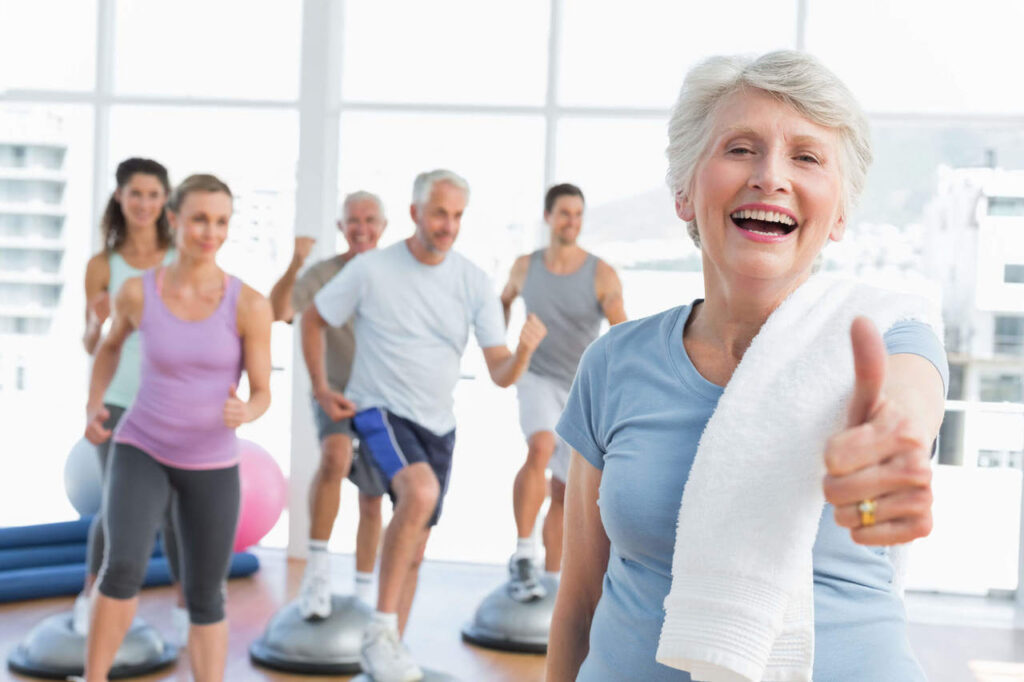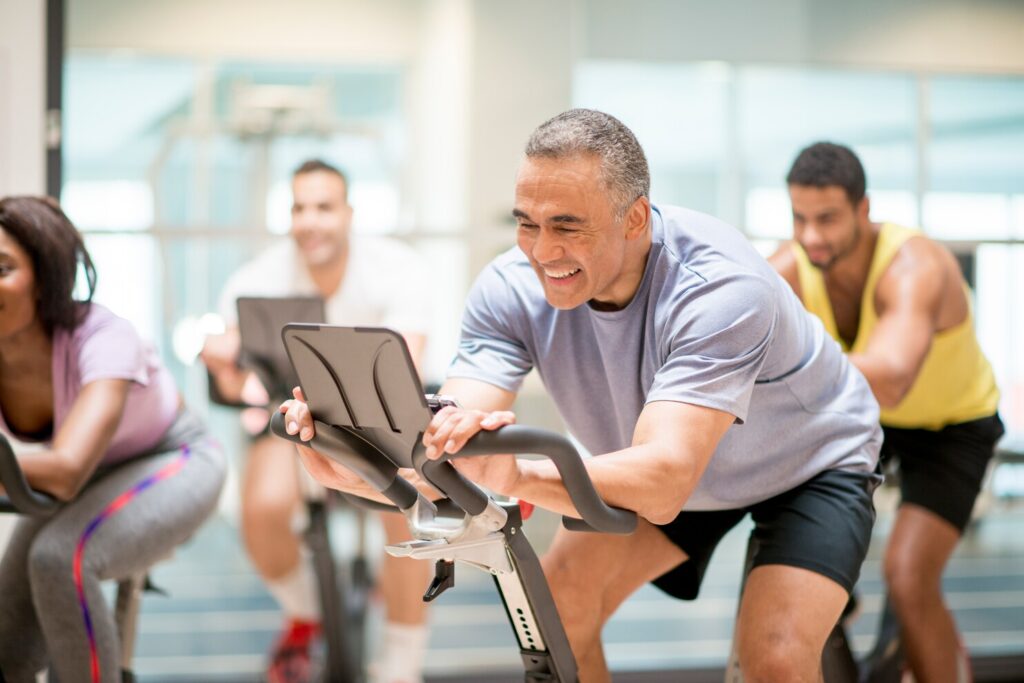Everyone is aware of the importance of exercise, but do you know why exercise is important? It benefits many different areas of your body and your life. Exercise is defined as any movement that makes your muscles work and requires your body to burn calories. There are many types of physical activity, including walking, jogging, running, swimming, lifting weights, yoga and dancing, to name a few. Being active has been shown to have many health benefits, both physically and mentally. It may even help you live longer. Here are few good reasons why you should make it a regular part of your routine.
Cardiovascular Disease (CVD)
The leading health-related cause of mortality for men and women in the world is cardiovascular disease. Meaningful cardiovascular health benefits may be attained with long-term participation in cardiovascular exercise. Hypertension is a major health problem. Elevated systolic and diastolic blood pressure levels are associated with a higher risk of developing coronary heart disease (CHD), congestive heart failure, stroke and kidney failure. There is a one fold increase in developing these diseases when blood pressure is 140/90 millimetres of mercury (mm Hg). In many cases, clients can reduce elevated blood pressure by decreasing weight (fat) and lowering alcohol and salt intake in their diet. Moderate-intensity exercise performed 3–5 times per week for 30–60 minutes per session, appears to be effective in reducing blood pressure (when elevated).

Blood Triglycerides, Cholesterol and LDL Cholesterol
The link between cholesterol and CHD has been fairly well established through long-term studies of individuals with high levels of blood cholesterol and the incidence of CHD. As high-density lipoprotein cholesterol (HDL-C) (good cholesterol) levels increase, they are independently associated with lower risk of CHD. It is also well established that a sedentary lifestyle contributes significantly to the development of CHD and to unfavourable elevation of blood fats and cholesterol levels; physical activity plays an important role in decreasing these health risks.
Diabetes, Insulin Sensitivity and Glucose Metabolism
Diabetes has reached endemic proportions, affecting millions of people worldwide. One unfortunate health consequence of physical inactivity is the weakening of the body’s insulin regulatory mechanisms. Elevated insulin and blood glucose levels are characteristic features involved in the development of non-insulin-dependent diabetes mellitus. When insulin function starts breaking down, the body’s blood sugar levels rise, leading eventually to the onset of “prediabetes” and then type 2 diabetes. Diabetes incidence is growing among youth and adults, largely as a result of obesity and inactivity. Regular exercise meaningfully increases insulin sensitivity and glucose metabolism, which means the body’s cells can more efficiently transport glucose into the cells of the liver, muscle and adipose tissue.
Stroke
Physical activity exerts a positive effect in lessening the risk of stroke in men and women. Individuals who engage in moderate to high amounts of physical activity have a lower risk of stroke incidence compared with people who accumulate little exercise.

Digestion
Exercise helps the intestinal muscles break down food and move it through your system correctly by strengthening the abdominal muscles and minimizing sluggishness. Exercise can help prevent constipation.
Arthritis
Arthritis is a broad term referring to more than 100 rheumatic diseases. Of the many types of arthritis, osteoarthritis (a degenerative joint disease) and rheumatoid arthritis (an inflammatory disorder affecting multiple joints) are the two most prevalent. Arthritis is a health problem commonly characterized by stiffness, pain and loss of joint function, and it affects people of all ages, genders and ethnic groups. It may imperil the physical, psychological, social and economic well-being of individuals, depriving them of their independence. Physicians commonly prescribe exercise as a treatment modality for arthritis. Consistent exercise improves aerobic capacity, muscle strength, joint mobility, functional ability and mood, without apparent increases in joint symptoms or disease. Exercise has been proposed to have a pain-relieving effect similar to that of a pharmacological treatment for some people. However, I suggest guarded caution when designing exercise for patients who have significant joint damage, especially in their weight-bearing joints. High-impact exercise is contraindicated in many cases of arthritis and should be replaced with swimming, aquatic walking and biking, or other aquatic exercise—which are much safer on the weight-bearing joints. Exercise programming for clients with arthritis should focus on gradually increasing cardiovascular conditioning, progressively overloading resistance exercise and steadily increasing flexibility and joint stability.

Osteoporosis
Physical activities that stimulate bone growth need to include progressive overload and must address variation and specificity of load. Specificity of load refers to exercises that directly place a load on a certain region of the skeleton.
With osteoporosis, a degenerative disease characterized by a loss of bone mineral density resulting in a susceptibility to bone fractures and health problems, it appears that resistance training and weight-bearing aerobic exercise may provide the needed stimulus for bone formation.
Asthma
Exercise is a common trigger for asthma symptoms. Many people with asthma may experience difficulty breathing, coughing, wheezing, or chest tightness during or after exercise. However, most people with asthma can successfully participate in their exercise of choice with proper guidance and treatment. Exercise has been shown to benefit all individuals, including those with asthma. A prominent review of 19 studies (involving 695 people) on exercises for asthma was published in 2012. The review found that exercise for asthma is safe, improves heart and lung fitness, and enhances quality of life. The review concludes that people with asthma should be encouraged to exercise without worrying that their symptoms will get worse.

Chronic Kidney Disease (CKD)
Chronic kidney disease (CKD) is an important risk factor for cardiovascular disease (CVD) and mortality. The increase in CKD in recent decades has paralleled increases in obesity, diabetes, and the metabolic syndrome. Physical inactivity is a modifiable risk factor that may affect the development and course of CKD. It is well established that exercise training improves a number of metabolic factors, including blood pressure and insulin resistance, which would be expected to preserve renal function as well as lower CVD risk. Epidemiological studies have suggested that partaking in vigorous physical activity may protect against kidney disease.
Musculoskeletal Health and Sarcopenia
Muscle mass, strength, power and endurance are essential contributing factors for the improvement of musculoskeletal health and the enhancement of movement capabilities. Although these components of musculoskeletal health show substantial decreases with age, it has been suggested in many researches that this is due largely to a decrease in physical activity, and not solely to age. Sarcopenia is the age-related loss of muscle mass and strength. There is a linear relationship with loss of muscle strength and loss of independence, contributing to falls, fractures and admissions into nursing homes. In addition, there is a decrease in metabolic rate and maximal oxygen consumption (owing to the loss of muscle mass). Improved musculoskeletal health may allow elderly persons to perform activities of daily living more effectively and with less effort.

Colon, Breast, Lung and Multiple Myeloma Cancers
Physical activity and exercise are correlated with a lower incidence of colon cancer in men and women, and breast cancer in women. Moderate to vigorous physical activity has a greater protective effect than lower intensities of physical activity. Physically active men and women have a 30%–40% reduction in relative risk for colon cancer compared with their inactive counterparts. In addition, physically active women have a 20%–40% reduction in relative risk for breast cancer compared with their inactive counterparts. Although more research is needed, it appears that physically active individuals may also have a lower risk of lung cancer, although lung cancer is relatively uncommon in non-smokers. Multiple myeloma cancer is more common in persons after the age of 50. In multiple myeloma, genetic damage occurs to plasma cells, transforming them into malignant or myeloma cells. Chronic fatigue is frequently reported and is a distressing side effect of multiple myeloma—as it is of many cancers. However, patients who walk 3–5 days per week for 15–30 minutes per session and do light resistance exercise (2–3 times per week) have demonstrated an increased overall quality of life.
Body Composition and Obesity
Obesity has risen to epidemic levels in the world, with more than 65% of adults overweight and 31% obese. Overweight and obesity are associated with increased risk for hypertension, osteoarthritis, abnormal cholesterol and triglyceride levels, type 2 diabetes, coronary heart disease, stroke, gallbladder disease, sleep apnoea, respiratory problems and some cancers (endometrial, breast and colon). The most favourable approach to fat loss is one that includes committed cardiovascular exercise, resistance training and caloric restriction within a sound behavioural-modification delivery program. Resistance training and circuit training research has shown meaningful changes in body composition. One of the noteworthy benefits of resistance exercise, as it relates to body composition, is the positive impact of maintaining or increasing fat-free body mass while encouraging the loss of fat body weight in a progressive overload resistance training program.

Skin
If vanity is still your number-one motivation to get in shape, then add glowing skin to the list of benefits. Exercise enhances the blood flow to your skin; studies have also shown that exercise improves acne by controlling the production of acne-inducing testosterone hormones like DHEA and DHT. Plus, sweating can unclog pores and help clear up your breakouts—ultimately detoxifying the skin of oils and dirt.
Sex life
The Harvard School of Public Health found that just 20 minutes of regular exercise a day can improve sexual response in women. Not only does working out leave you feeling energized, but it can also make you feel more desirable. “Since exercise can improve health, vitality, appearance and self-esteem, it does indeed tend to increase interest in—and capacity for—sexual activity. “Just make sure your partner is on the exercise bandwagon as well!” Working out with your partner, not only will allow you to spend time together, but it will trigger adrenaline and other feel-good hormones to get you in the mood.

Pregnancy
Maintaining a regular exercise routine throughout your pregnancy can help you stay healthy and feel your best. Regular exercise during pregnancy can improve your posture and decrease some common discomforts such as backaches and fatigue. There is evidence that physical activity may prevent gestational diabetes (diabetes that develops during pregnancy), relieve stress, and build more stamina needed for labour and delivery. It’s such an important part of a healthy pregnancy that the American College of Obstetricians and Gynaecologists recommends at least 20 to 30 minutes of moderate-intensity exercise on most or all days of the week (as long as your provider hasn’t ruled out exercise or limited your physical activities because of a medical condition or complication).
Polycystic Ovarian Syndrome (PCOS)
Polycystic ovarian syndrome (PCOS) is a common endocrine disorder affecting female adolescent and adulthood globally. The most annoying complications of PCOS are obesity and infertility. Exercise is proved to be a best therapeutic and supportive management in PCOS patients in reducing infertility. Exercise reduces the risk and restores fertility and quality of life in PCOS patients through inducing hormonal changes of testosterone, androstenedione, combating obesity, metabolic syndrome, reducing inflammatory markers, and increasing immunity.

Stress
A growing body of research over the last 10 years substantiates that physical activity and exercise also improve psychological well-being. Individuals with improved levels of fitness are capable of managing stress more effectively than those who are less fit.
Mood State
Frequently, fitness professionals hear clients say that they exercise because it makes them “feel good.” Because mood state is influenced by psychosocial, psychophysiological, biochemical and environmental factors, explaining the exercise-induced mechanism is quite difficult. However, it appears that cardiovascular and resistance exercise can positively affect various mood states, including tension, fatigue, anger and vigor (a psychological variable defining vitality or energy) in normal and clinical populations. In addition, even acute bouts of exercise may improve a person’s present mood state.
Depression
Chronic insomnia, defined as difficulty initiating or maintaining sleep, awakening too early in the morning, or nonrestorative sleep, is the most common sleep disorder among adults. There’s a substantial body of scientific evidence that exercise helps improve sleep. Making exercise part of your regular routine can contribute to healthier, more restful sleep—and may help improve sleep issues such as insomnia. Deep sleep helps to boost immune function, support cardiac health, and control stress and anxiety.

Anxiety
According to the dictionary, anxiety is “distress or uneasiness of mind caused by fear of danger or misfortune.” It is a stage of apprehension. Exercise is beneficial for the reduction of anxiety.
Insomnia
The antidepressant action is one of the most commonly accepted psychological benefits of exercise. Individuals with clinical depression tend to be less active than healthy, active adults and have a reduced capacity for physical exertion. Since people suffering from depression are not predisposed to participating in exercise, it is challenging for fitness professionals to introduce physical activity to this population. However, patients diagnosed with depression have credited exercise as being a most important element in comprehensive treatment programs for depression.
Dementia
Over the years, studies have found that staying active can boost mind function and energy, decreasing the risk of dementia. Physical activity “improves cognitive function in healthy elderly persons, and potentially reduces the risk of developing cognitive impairment,” according to the Alzheimer’s Association.

Self-Esteem
Exercise also has a positive influence on self-esteem. The effect appears to be more potent in those with lower self-esteem. In relation to exercise, it is interesting to note that important factors influencing a person’s self-esteem are perceptions of their body attractiveness and physical condition.
Enhances Mental Performance and Work Productivity
Exercise is important for improving overall quality of life, especially when it comes to work. Not only does exercise improve self-confidence in the workplace, which helps you take on leadership roles and perform better, but it also increases overall productivity and focus. A study released by the American College of Sports Medicine found that 65 percent of employees surveyed reported an increased ability to manage their time and produce more, as well as an overall improved mental and interpersonal performance when they worked out in the middle of the day.

Dr Saranjeet Singh
Fitness & Sports Medicine Specialist
Lucknow (UP), INDIA







